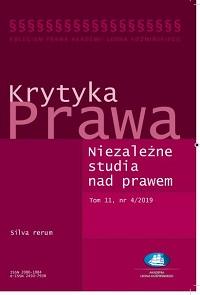The Identity of the Judge in Visual Culture: The Role as Ritual
Przemysław Kaczmarek
Uniwersytet Wrocławski
10/21 13 (3) Krytyka Prawa. Niezależne Studia nad Prawem
DOI 10.7206/kp.2080-1084.470








